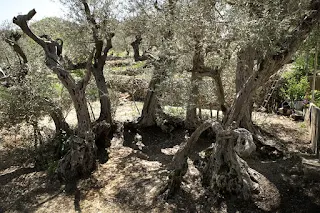The Oldest Olive Trees
1. Noah’s sisters (Lebanon): 6,000 years old
2. Olive Tree of Vouves (Greece): 4,500 years old
3. Olivastro di Luras (Italy): 4,000 years old
4. Al-Badawi tree (Palestine): 3,000-4,000 years old
5. Stara Maslina (Montenegro): 2,000-3,000 years old
6. Olive tree in Algarve (Portugal): 2,000-2,500 years old
7. Bidni olive trees (Malta): 2,000 years old
8. An olive tree close to the Via Augusta (Spain): 1,700 years old
9. Maslina Kastils (Croatia): 1,500 years old
Today about 9.7 million hectares were covered with olive trees, which is more than twice the area of land devoted to apples, bananas, or mangoes. Just oil palms and coconut trees demand more space.
According to the FAO, an approximated 867 million olive trees are on the earth now, and the vast bulk of these are located in Mediterranean countries.
The ten largest olive producing Mediterranean countries get 95 per cent of the world’s olives.
Leading olive producing nations
1. Spain – 6.6 million tones (2.6 million hectares cultivated area)
2. Greece – 2.3 mln tones (0.9 mln ha)
3. Italy – 2.1 mln tones (1.2 mln ha)
4. Turkey – 1.7 mln tones (0.8 mln ha)
5. Morocco – 1.4 mln tones (1.0 mln ha)
6. Syria – 0.9 mln tones (0.8 mln ha)
7. Tunisia – 0.7 mln tones (1.6 mln ha)
8. Algeria – 0.7 mln tones (0.4 mln ha)
9. Egypt – 0.7 mln tones (0.07 mln ha)
10. Portugal – 0.6 mln tones (0.4 mln ha)


This post may contain affiliate links. As an Amazon Associate, I earn from qualifying purchases.
Comments
Post a Comment